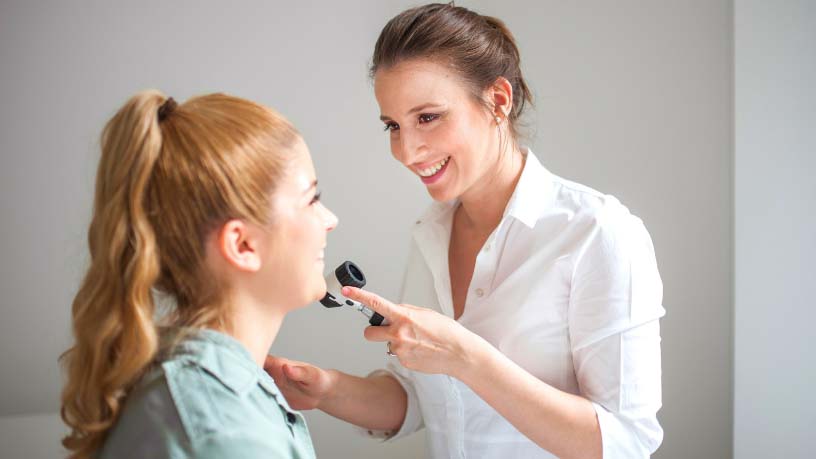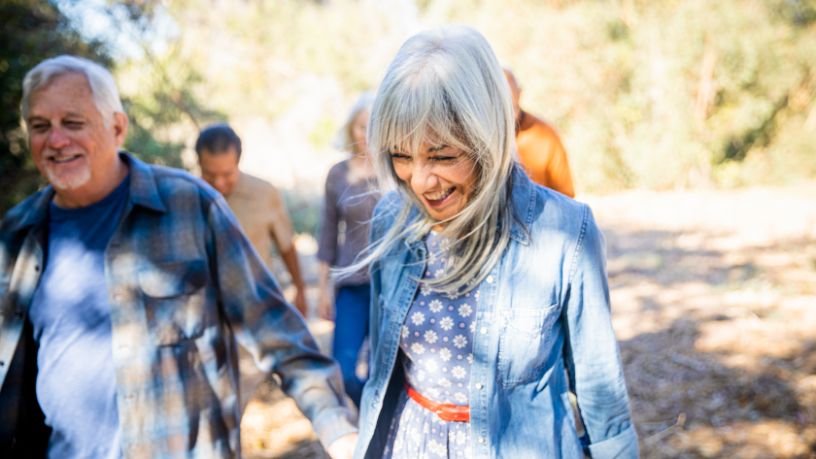There are 3 main types of skin cancer, including melanoma and 2 non-melanoma varieties.
Key takeaways
Basal cell carcinoma (BCC) is the most common skin cancer in Australia, but thankfully the least dangerous too.
Melanoma is the deadliest skin cancer. It can develop rapidly and spread to other parts of your body.
Australia has one of the highest skin cancer rates in the world, with more than 2 out of 3 people developing the illness at some point in their lives.1
However, while melanoma is the third most commonly diagnosed cancer in Australia, it’s only the 10th most common cause of cancer death.2
If caught and treated early enough, your chance of surviving skin cancer is more than 95%.3
Here, we look at the main types of skin cancer in Australia, including what to look out for, who’s most at risk and how you can better protect your skin.
What is skin cancer?
Skin cancer occurs when ultraviolet (UV) rays damage your skin cells, usually due to overexposure to the sun. This damage can add up over time.
There are 3 main types of skin cancer. They include melanoma and 2 non-melanoma varieties (also known as keratinocyte cancers), basal cell carcinoma (BCC) and squamous cell carcinoma (SCC).
With the potential to spread to other parts of your body, melanoma is the most serious type of skin cancer.4 However, non-melanoma skin cancers are much more common in Australia.4
As well as older age, unavoidable risk factors for developing skin cancer include having:
- skin that’s pale or freckled
- red hair and light-coloured eyes
- a weakened immune system
- lots of moles on your body (or moles with irregular shapes or colours)
- a family history of skin cancer
- a previous skin cancer diagnosis
- been exposed to arsenic in the past
- certain skin conditions (like sunspots).
However, exposure to UV radiation by spending too much time in the sun, including sunbathing or working outdoors, is the main cause of skin cancer. Smoking may also increase your risk.4
Different types of skin cancer
Basal cell carcinoma
Around 70% of non-melanoma skin cancer cases are basal cell carcinoma (BCC), a type of skin cancer that commonly develops on your face, neck, head, back and shoulders.5
In Australia, BCC is the most common but least dangerous type of skin cancer.6 If detected early, it can be treated successfully.
It can take years to develop BCC. The condition usually starts with a small bump or red patch on your skin, which can grow larger (and more detectable) over time. Other things to look out for include:
- scaly skin
- red or pearly lumps
- sores that bleed or don’t heal
- scars, moles or dermatitis that bleeds.6
Squamous cell carcinoma
In Australia, about 30% of non-melanoma cancers are squamous cell carcinoma (SCC).5 Like BCC, this type of skin cancer typically develops on areas of your body that receive the most sun, like your head, neck, hands, lower legs and forearms.
If left untreated, SCC can spread to other parts of your body. According to one study, around 70% of non-melanoma skin cancer deaths in Australia are caused by SCC.7
SCC usually develops over a few weeks or months. An early warning sign includes a thick, red, scaly spot that appears on the skin and doesn’t heal (or a small ulcer or patch of scaly skin on your lips). You may also notice:
- firm, red lumps
- crusted sores
- sore patches of skin
- sores or rough patches inside your mouth
- red, raised sores on your genitals or anus.8
Melanoma
In 2023, more than 18,000 people were diagnosed with melanoma in Australia.9 If left untreated, this highly dangerous cancer can spread to other parts of your body and quickly become life-threatening.
Melanoma usually develops as a new spot on your skin, or as a change to an existing mole or freckle. You should also keep an eye out for:
- new spots
- spots that grow larger
- spots with irregular edges (not smooth)
- spots dotted with different colours, like black, brown, red, white, blue or light grey
- itchy or bleeding spots.
While melanoma usually appears on parts of your skin that are overexposed to UV, it can develop all over.
Spots that are raised and even in colour may indicate nodular melanoma, a very dangerous form that looks different to regular melanoma. These spots may appear red, pink, brown or black.3
When to see your doctor
While services like MoleMap provide screening and detection for skin cancer, there’s no national skin check program in Australia. So, it’s important to become familiar with your own skin and check it regularly.
Talk to your GP right away if you notice any concerning spots or signs of cancer. They may refer you to a dermatologist, who can inspect your skin and possibly perform a biopsy.
Of course, the best protection against skin cancer is prevention. According to Cancer Council, when the UV index is forecast to be 3 or above, you should always:
- cover as much of your skin with clothing as possible
- apply SPF50 or SPF50+, broad-spectrum, water-resistant sunscreen to exposed skin
- wear a hat
- use sunglasses
- seek shade from the sun.10
Resources
Cancer Council offers resources online and over the phone on 13 11 20.
MoleMap is a skin cancer screening service that’s available Australia-wide. Visit their website or call them on 1800 665 362.

At Bupa, trust is everything
Our health and wellbeing information is regularly reviewed and maintained by a team of healthcare experts, to ensure its relevancy and accuracy. Everyone's health journey is unique and health outcomes vary from person to person.
This content is not a replacement for personalised and specific medical, healthcare, or other professional advice. If you have concerns about your health, see your doctor or other health professional.
1SunSmart. (2024). Skin cancer facts & stats. SunSmart.
2Australian Government, Cancer Australia. (2024). Melanoma of the skin. Australian Government, Cancer Australia.
3Better Health Channel. (2024). Melanoma. Victoria State Government, Department of Health.
4Cancer Council Victoria. (2024). Skin cancer. Cancer Council Victoria.
5Cancer Council. (2024). Non-melanoma skin cancer. Cancer Council.
6Healthdirect. (2023). Basal cell carcinoma (BCC). Healthdirect.
7Girschik, J., Fritschi, L., Threlfall, T., & Slevin, T. (2008). Deaths from non-melanoma skin cancer in Western Australia. Cancer Causes Control, 19(8), 879-885.
8Healthdirect. (2023). Squamous cell carcinoma (SCC). Healthdirect.
9Cancer Council. (2024). Melanoma. Cancer Council.
10Cancer Council. (2024). Preventing skin cancer. Cancer Council.
You might also like...
Skin checks: Everything you need to know
Skin cancer is common in Australia, but early detection can significantly decrease your risk of a serious outcome. Discover different ways to check your skin.
Beating bowel cancer: The routine test that saved Jenny’s life
When Jenny did a routine bowel cancer test, she never imagined it would be positive. This is her story.
Bowel cancer: The basics
Bowel cancer is the second deadliest cancer in Australia, and unfortunately, it can go undetected. Find out about the symptoms and available screenings.
Knowing your nuts: A guide to self-checking your testicles
More than 900 Australian men will be affected by testicular cancer this year. Learn how to check for early signs and symptoms.





